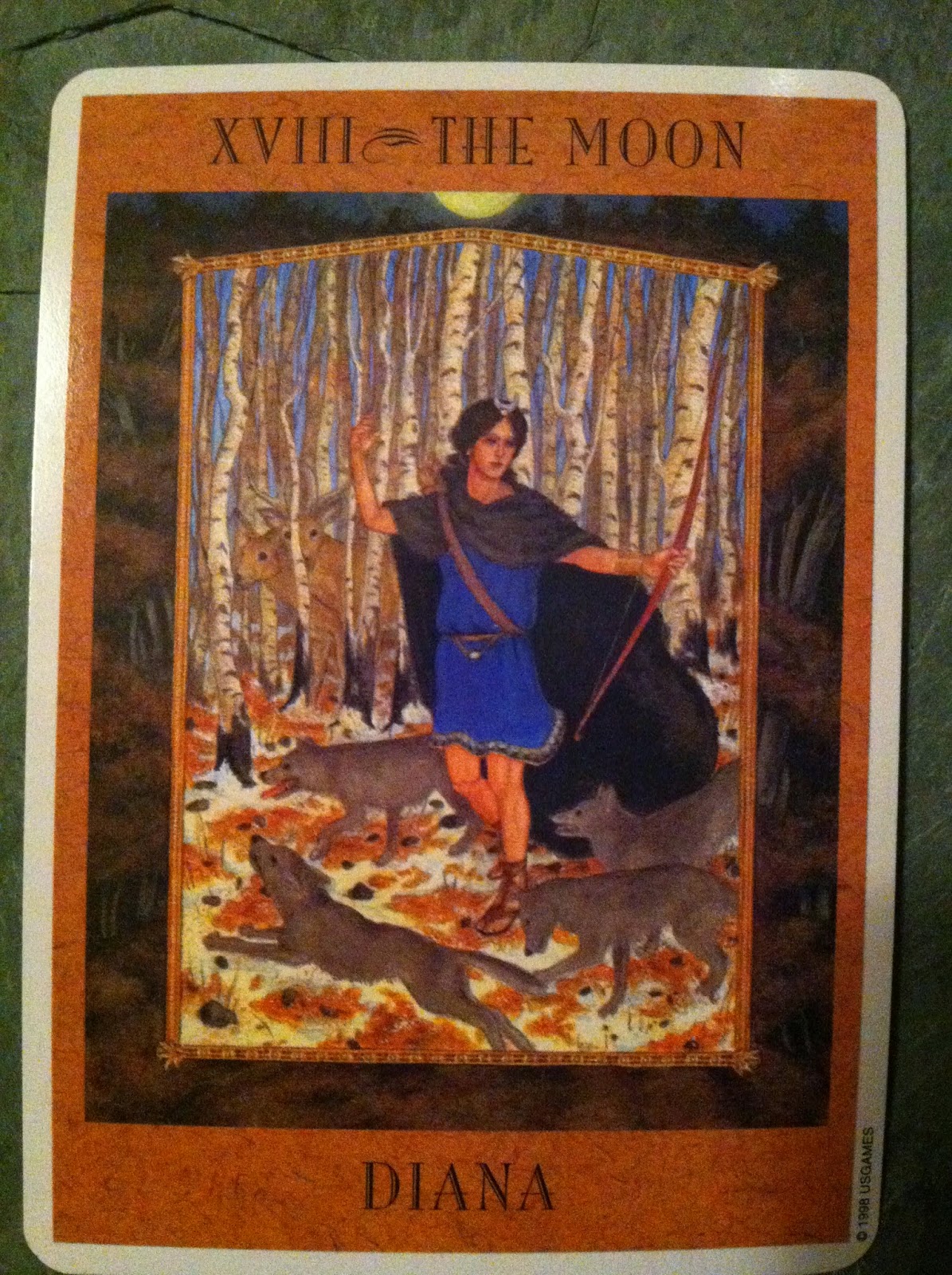When I see the Chariot in the upright position, it makes me think of smooth sailing. It can mean literal travel, or accomplishing a goal. It signifies transitions.
The Chariot in the Celtic Deck is drawn by creepy horses. Maybe that's a good thing, though. They scare everything out of the way. The Questioner here is very driven to accomplish the task at hand, or they will soon be inspired. There may be a scary intensity to the Questioner. Anger may be a motivator. The Questioner may also feel very restless and reckless. They may be craving an adventure.
Sometimes, there is a hint of caution in the Chariot--don't go too fast, don't make your turns too sharp. Stay in control.
The symbol on the front of the chariot is the glyph for Hermes, messenger of the gods, god of words. Maybe a message will be delivered for the Questioner.
Rhiannon, Celtic goddess, is the goddess for the Chariot in the Goddess deck. She rides an ethereal white horse. Kris Waldherr writes that she "symbolizes the unceasing force of movement that pulls all of life along with it" (The Goddess Tarot, p. 29). Her three birds sing songs that can carry the dead to life, and the living into death (p. 30).
A horse carries people to Tir na Nog, the Otherworld of youth, beauty, and joy.
Black is mystery, the unknown, the nighttime and dreams. Silver is feminine magic, and the Moon. White is knowledge. Gold is masculine power, and the warm sun that lights the day. They are in perfect balance, just like the yin/yang symbol on the chariot. The rider is not only confident, but joyous. The sun shines upon him and his horses. Things are going really well--either he's got such strong control that he doesn't need reins, or he is much beloved by his horses, so he can rest in the happiness of trust, in himself and in his surroundings. He's taken the first steps and is now on a roll (Get it?). The Questioner may do the same, depending on the reading. His canopy is clear night sky, which makes me think of "traversing across the stars," and the purple is for royalty, and also the color for Sagittarius, sign of the wanderer. It's also the color of the crown chakra, the chakra that connects us to higher powers and our greatest possible selves. Forging this connection and reaching our potential can and has been compared to a journey.
I've been interested in the Chariot from an astrological point of view, in particular because it is associated with Luna, my sun sign. I never really understood the connection between the Chariot and Luna, but this site was very helpful: Check it! Aeclectic is a great site to browsed, and now the Chariot and Luna make a lot more sense. The Chariot is full of contradictions, like sun/moon, black/white, taking risks/being cautious. Luna is like that too. Lunas crave affection, but can push people away with moods as welcoming as barbed wire when they need affection the most. We're homebodies, but also crave adventure and recognition.
When reversed, the Chariot usually symbolizes two things, frustration and stagnation, and/or recklessness and losing control. In this case, it serves as a heads-up. Once, I got the Chariot during a reading and was told to be careful for any car issues.





















